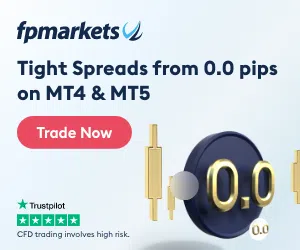-
Best Forex Brokers
Our top-rated Forex brokers
-
Brokers for Beginners
Start trading here
-
Forex Demo Accounts
Learn to trade with no risk
-
ZAR Trading Accounts
Save on conversion fees
-
Lowest Spread Brokers
Raw spreads & low commissions
-
ECN Brokers
Trade with Direct Market Access
-
No-deposit Bonuses
Live trading with no deposit
-
High Leverage Brokers
Extend your buying power
-
Islamic Account Brokers
Best accounts for Muslim traders
-
Market Maker Brokers
Fixed spreads & instant execution
-
All Trading Platforms
Find a platform that works for you
-
TradingView Brokers
The top TradingView brokers
-
MetaTrader4 Brokers
The top MT4 brokers in SA
-
MetaTrader5 Brokers
The top MT5 brokers in SA
-
cTrader Brokers
The top cTrader brokers in SA
-
Forex Trading Apps
Trade on the go from your phone
-
Copy Trading Brokers
Copy professional traders
Pending orders are useful execution methods that allow traders to set parameters and enter or exit trades when certain conditions are met. In this video, Alison describes the various order types and how to use them in different trading strategies.
Transcript
Welcome to our educational video on forex trading. In this session, we’re going to unravel the complexities of pending orders. Unlike standard market orders, pending orders play a unique role in a trader’s strategy. Let’s explore how they can be used to enhance your trading approach.
What Are Pending Orders?
Automating Trading Decisions
A pending order is an instruction to a broker to execute a trade at a future point, under specific conditions. These orders are essential for automating trading processes and maintaining market presence, even when you’re away from your platform. There are three main types of orders: market orders, limit orders, and stop orders.
Types of Orders Explained
-
Market Orders: This is the simplest forex order. It allows immediate buying or selling of currency at the current market price.
-
Limit and Stop Orders:
- Buy Limit: An order placed below the current price, anticipating a bullish trend. It’s used to buy at a price lower than the current level.
- Sell Limit: Placed above the current price, this order is used to sell at a price higher than the current level.
- Buy Stop: This order is placed above the current price, expecting to capitalize on an upward trend.
- Sell Stop: It’s a short trade placed below the current price, aiming to profit from a bearish movement.
Special Orders: Stop-Loss and Take-Profit
- Stop-Loss: This order limits potential losses by automatically triggering a sale when the price hits a specified level.
- Take-Profit: Similar to a stop-loss, this order automatically closes a position to secure a certain amount of profit.
Advanced Order Types: Stop Limit Orders
- Buy Stop Limit: Combines the features of a Buy Stop and Buy Limit. It’s used to buy above the current market price but not beyond a set limit.
- Sell Stop Limit: Similar to Buy Stop Limit, but for selling. It combines Sell Stop and Sell Limit features, selling below the current market price with a minimum set price.
Pros and Cons of Pending Orders
Maximizing Efficiency, Minimising Risks
The primary advantage of pending orders is their ability to execute trades without waiting for target prices. They’re also effective in preventing slippage, although it can still occur. The downside is the potential to miss trades by narrow margins, such as setting a buy limit that’s just short of the market movement.
Utilizing Trend Lines and Tools
Optimising Order Placement
Understanding market trends is crucial for determining the type and placement of orders. Tools like trend lines, moving averages, Bollinger Bands, and oscillators can aid in identifying entry and exit points and ideal moments for profit-taking.
Conclusion and Contact Information
Thank you for watching our tutorial on pending orders. If you have any questions or need further clarification, please contact us at fxscouts.com or leave a comment below.
Stay updated
This form has double opt in enabled. You will need to confirm your email address before being added to the list.




























